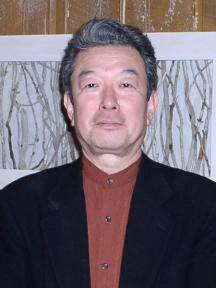The early history of Sapporo forms an integral part of
the history of Hokkaido, once known as Ezo. Located on the lshikari
Plain, the homeland of the island's indigenous Ainu people,
"Sapporo" means literally "large dry land," or "important river
flowing through a plain" in the Ainu language. Evidence shows the
possibility of Japanese settlers in Ezo from as early as the 7th
century. However, it wasn't until 900 years later in the 16th
century, that trade was established with the Ainu and even later
until a main trading post was set up near Ishikari River by the
Tokugawa Shogunate in 1821, not far from the site of present-day
Sapporo.
In order to strengthen its northern coastal
defences, in 1855 the Shogunate declared the whole of Hokkaido to be
under its administration, establishing government offices in
Hakodate on the southern coast of the island.
It was during
the Tokugawa period that the Sapporo region was first inhabited by
Japanese. In 1857 two families, totalling seven people, were
registered as residents. In 1866 Kametaro Otomo was sent to Sapporo
by the regional government to build a canal to serve as the main
route for irrigation and transportation of construction materials.
This canal, now known as the Sosei River, runs through the heart of
the city. It was along this waterway that 28 families travelled into
the region, gradually creating a farming community and eventually
the village of Sapporo.
In 1868, a new government headed by the Meiji
Emperor assumed direct control of Japan.
This transfer of power from
the Shogunate to the Emperor became known as the Meiji
Restoration.
The new government was eager to establish a strong
nation, both militarily stable and economically sound. It was extremely
interested in the development of the frontier land of Hokkaido and in 1869
established the Kaitakushi (Development Commission), a national government
ministry devoted to planning and developing the island's resources. It was
at this time the island's name was changed from Ezo to Hokkaido. Hakodate,
the administrative centre until then, was deemed an unsuitable location
for both interior development and defence of the northern
frontier.
During the Tokugawa period, Takeshiro Matsuura had
explored and surveyed the island. As a Kaitakushi commissioner, he
strongly recommended that the capital of Hokkaido be established on the
lshikari Plain. As a result, Yoshitake Shima was sent to Hokkaido as the
commissioner responsible for founding a capital city. He first viewed the
area that would become the city of Sapporo from Kotanbetsu Hill, part of
the present Maruyama Park. From there, he planned a green belt dividing
the city into north and south. This belt became the present Odori
Park.
It was decided that the government buildings would be centred
around the Kaitakushi office in the north, while to the south, amusement
and commercial quarters would be located. The canal divided the city into
east and west. However, in his eagerness to build a model city, he
neglected financing and was recalled to Tokyo after squandering a one-year
budget in three months.
Commissioner Michitoshi Iwamura was
appointed to complete the task and the Kaitakushi Office was completed in
1871, paving the way for the transfer of administration to Sapporo.
Iwamura then surveyed Odori Park and the surrounding area and began to
develop the city around the park in a grid pattern.
In 1870, the
Vice-Governor of the Kaitakushi, Kiyotaka Kuroda looked to the West for
help with colonisation. He felt that by inviting experts who had
experience in climates similar to that of Hokkaido, he could speed up the
island's development. In l871, Kuroda went to America to study its
development techniques and to observe related facilities. As a result, he
was successful in inviting Horace Capron, Secretary of Agriculture under
President Ulysses S. Grant, to be an adviser to the Kaitakushi. At the
same time, he began to import into Hokkaido, machinery, technology, and
seeds from the United States to Hokkaido.
Government policy
encouraged the establishment of many industries in this developing
frontier.
Factories, built at governmental expense, were later
transferred to private ownership. The commodities of those early
factories, beer and dairy products, are still the main products of
Hokkaido. Imported seeds and seedlings were first tested at the National
Botanical Gardens in Tokyo and Sapporo and those which proved potentially
profitable were made available to the farmers. Among these were wheat,
corn, potatoes and asparagus.
The economy slackened after this
initial surge of prosperity, but improved again in 1874, when the colonial
militia system, called "Tondenhei," was founded to defend the northern
frontier and to develop the island. An influx of people from Honshu helped
revive the stagnant economy. In 1880, Japan's third operational railroad
was established between Sapporo and Otaru, a major port city 34km to the
west. It played a vital role in reducing costs and increasing the
development of industry. Two years later, the extension of this line to
the Horonai coal mining area enabled Hokkaido to become an exporter of
coa1.
As Hokkaido's economy steadily developed, the Kaitakushi
became unnecessary and was abolished in l882. In 1886, Hokkaido Prefecture
was established with Michitoshi Iwamura as its first governor.
In
1918, Hokkaido celebrated its 50th anniversary with a grand exhibition in
Sapporo.
The city also became the first in Hokkaido to replace its
horse-drawn trolley cars with electric streetcars. In 1922, Sapporo
adopted a municipal administration as the city increased in size to over
24 sq.kilo meters with a population of 127,044 residents in 22,915
households.
Industrial development was well under way in food
processing, forestry and other areas. Sapporo remained physically intact
at the end of World War II and Hokkaido was thrust into the limelight
as a key region of Japan. The Hokkaido Comprehensive Development Plan,
approved in 1950, encouraged leading business and manufacturers in Honshu
to open branch offices in Sapporo. This industrial expansion brought with
it a huge increase in population.
With a population of over one
million, as indicated by the 1970 census, Sapporo was designated as an
autonomous city on April 1st 1972, under the Local Autonomy Law of Japan
and became one of Japan's "eleven major cities," along with Tokyo,
Yokohama, Nagoya, Kyoto, Osaka, Kobe, Kita Kyushu, Fukuoka, Kawasaki, and
Hiroshima. Also in 1972, Sapporo hosted the 11th Winter Olympic Games,
which helped speed up improvements to the city's cold climate facilities,
including a subway system, district and road heating.
The city
survey of May 1, 1983 recorded a population of 1,483,182, which made
Sapporo the fifth largest city in Japan. Despite its intense growth from a
small agricultural outpost to a pivotal city in northern Japan, the area
continues to be an attractive, clean and healthy place to live and
continued efforts will no doubt contribute to further development and
prosperity in the future. |




